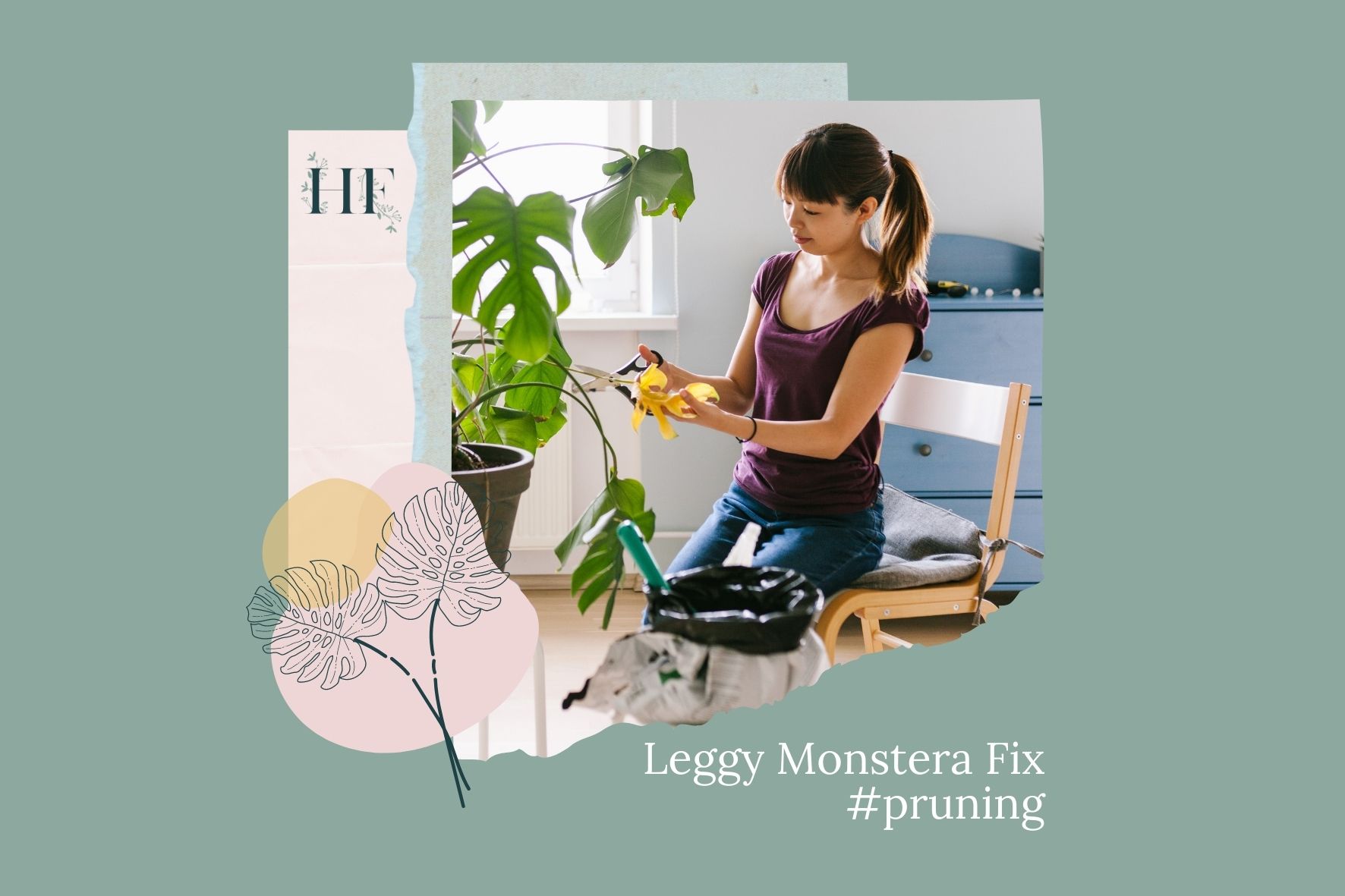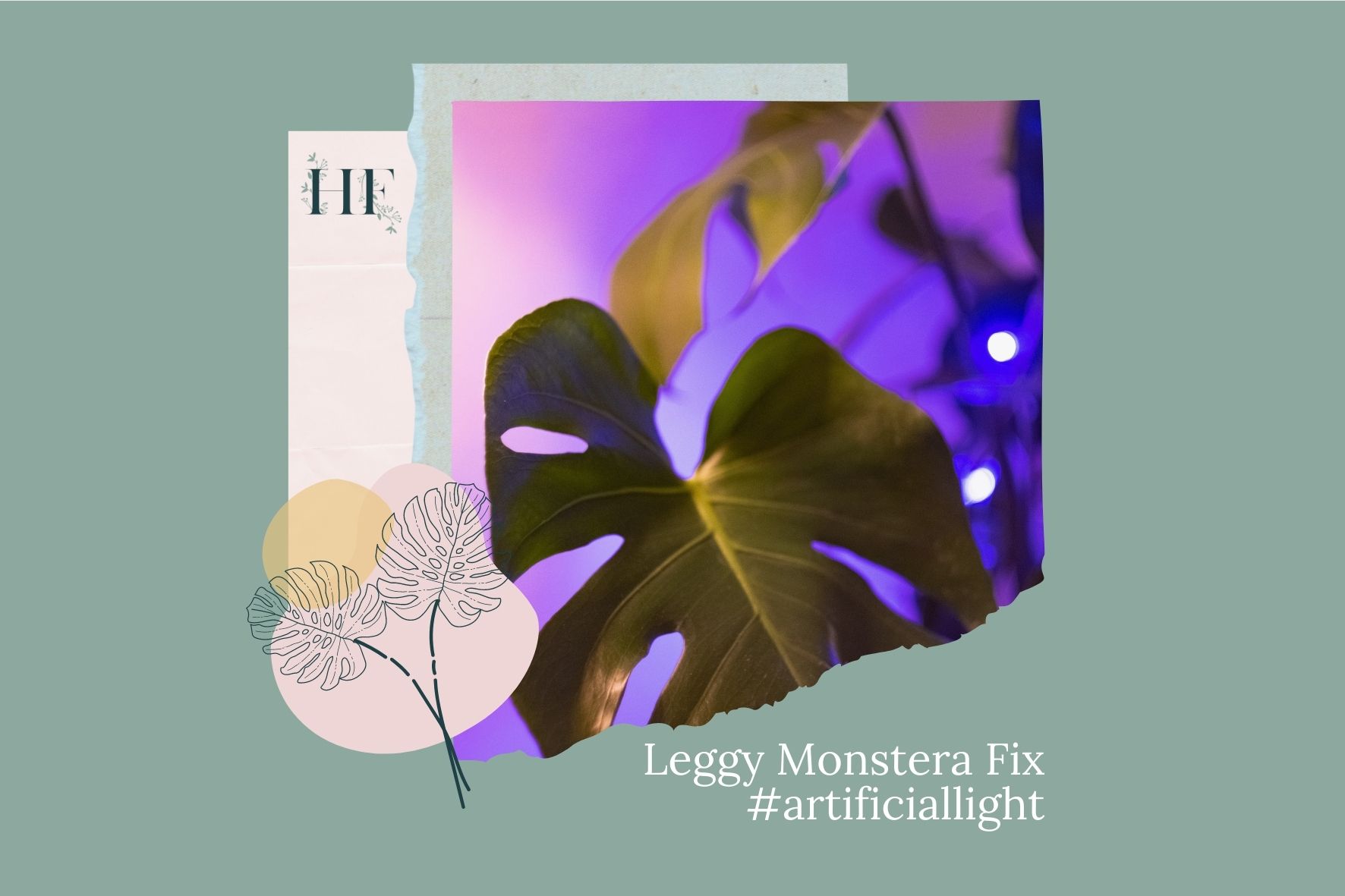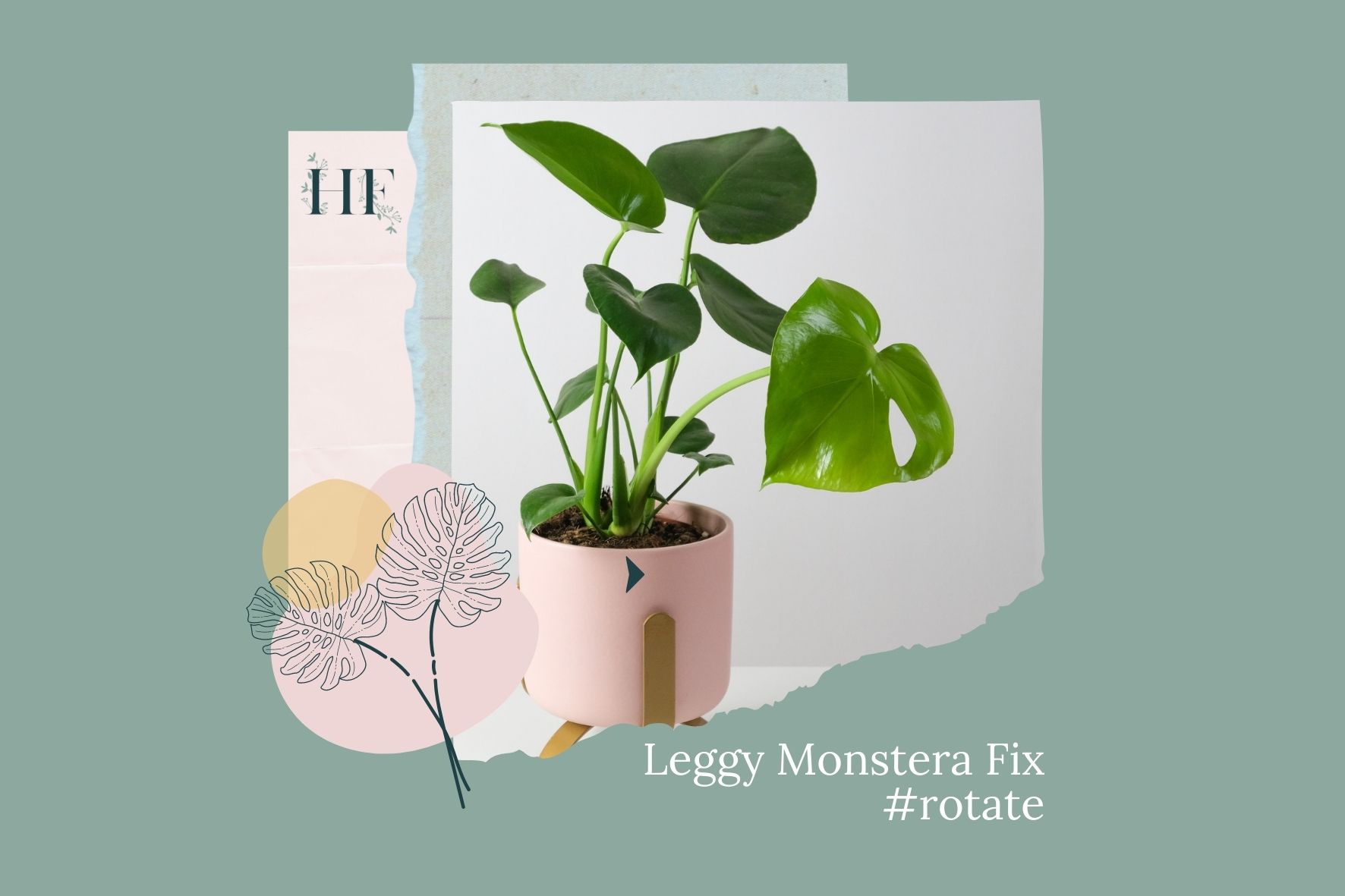After seeing all those lush and bushy Monsteras on Instagram, do you feel like yours isn’t looking as full as it should? Is your Monstera looking sparse and leggy, and you don’t know what is causing it and how to fix it?
A Monstera becomes leggy when it doesn’t have access to enough sunlight, causing it to look stretched out, with sparse foliage and longer stems. You can fix a leggy Monstera by pruning back the leggy growth and providing the plant with enough bright indirect light.
Every time your plant starts looking less-than-healthy, it can be discouraging. Fortunately, fixing a leggy Monstera is doable. Keep reading to find out what causes the problem and what you can do to fix it!
Leggy Monstera
Legginess occurs when your Monstera plant is not getting enough light to perform photosynthesis properly and produce new healthy growth.
As a result, your Monstera becomes stretched out, with sparse foliage and longer stems. As the plant stretches out, the stems elongate disproportionally and weaken.
This is because a leggy Monstera tends to stretch towards whatever light source is available, which is a natural response since Monsteras are climbers.
Why Is My Monstera So Leggy?
These are the main causes of legginess in Monstera plants:
1) Lack of Light
The main cause of a leggy Monstera is the lack of light.
Monsteras need bright, indirect sunlight for a minimum of six hours a day. But, if your Monstera does not have access to adequate sunshine or a light source, it will naturally seek whatever light is available at the moment.
Too little light can slow growth significantly, resulting in legginess and yellowing leaves with few-to-no fenestrations.
For optimal lighting, check my Monstera Light Requirements – How Much Does It Need? blog post.
2) Too Much Fertiliser
Over-fertilising your Monstera can also cause legginess.
Your Monstera may develop too quickly when given too much nitrogen, especially in the early stages. It’s a non-sustainable growth spurt.
Also, your Monstera will generate cells quicker than average if it receives too much nutrition. The result is a weak, long stem that is prone to damage.
To fix an over-fertilised Monstera and avoid over-fertilising your Monstera plant, check A Guide to Monstera Nutrients (Why, When and How to Fertilise).
3) Improper Temperature and Humidity Levels
In the wild, Monstera plants enjoy a humid tropical climate throughout the year with medium to high humidity levels (60 to 80%) and temperatures between 68°F to 86°F (20 to 30°C ).
Increased temperatures can also produce growth spurts in younger seedlings, resulting in a leggy Monstera.
Similar to overexposure to nitrogen, stems may grow in length without the proper structure needed for its support.
Find out how to keep the right amount of humidity for your Monstera, check my Monstera Humidity & Temperature Needs – 7 Tips to Get It Right blog post.
4) Small Pot Size
Another cause of legginess in Monsteras is overcrowded roots because the pot is too small.
Rootbound Monsteras suffer from irregular development patterns due to inadequate nutrition and moisture absorption caused by the lack of space.
This often happens when your Monstera is in a pot that is too small.
To avoid having a rootbound Monstera, check A Guide to Repotting Monstera (When, Why and How) and How to Choose the Best Pot for Monsteras & 10 Planter Ideas.
How Do I Fix a Leggy Monstera?
If your Monstera is showing signs of legginess, there are a few things you can do to fix the problem and encourage your plant to grow healthily.
Here’s what to do with a leggy Monstera:

1) Prune Back Leggy Growth
If you have a leggy Monstera plant, pruning can help encourage fuller growth, making your Monstera grow bushier.
You can trim back the leggy growth in early spring, before your Monstera starts its growing season. Since Monstera’s grow new stems from a node, prune your leggy Monstera, at a 45-degree angle, just above a node.
Here’s how to prune a leggy Monstera:
- Gather your tools:
- Sharp gardening shears: I recommend gardening shears since they ensure that you will make a clean cut, instead of crushing or bruising the stem.
- Gardening gloves: Since all parts of the Monstera are toxic due to their needle-like insoluble calcium oxalates, you will want to use gloves to prevent skin irritation. Avoid touching your face when handling Monsteras. But if do get some sap on your skin, wash it with soap and warm water.
- Before pruning, clean your shears with soap or white vinegar to prevent bacteria and illness from spreading.
- Identify the leggy stems that you want to trim and locate the node from where you will make the cut.
- Then, prune the stem at a 45-degree angle just above the node.
- After every cut, take a couple of steps back to assess if you are closer to your desired shape. However, it’s best not to cut away more than 25% of the stems at any given time since it can weaken your Monstera plant.
- Decide if you want to propagate or discard the cuttings. If you decide to propagate, you will need to trim the cuttings again a few inches below a node. Use the Montera propagation guide for all you need to know about this process.
However, pruning a leggy Monstera won’t fix the legginess. Instead, it’s the first step to correcting the issue. You then need to address your Monstera’s light requirements, which leads to my next point.
Read also: A Guide to Monstera Pruning (How, When and Why).

2) Provide Sufficient Bright Indirect Light
Providing sufficient light is key to fixing a leggy Monstera.
Monsteras need bright, indirect sunlight for a minimum of six hours a day. Both light intensity and duration matter to help your Monstera thrive. Monstera Deliciosa light requirements are a minimum of 75 to 100-foot candles and a preferred level of 200 to 500-foot candles.
Here’s what you can do to make sure your Monstera is getting enough light:
- Check that it’s receiving bright indirect light for at least 6 hours.
- Tip: You can make sure that your Monstera is getting enough light by measuring the light levels. using a light meter. The one I recommend is Dr.Meter Digital Light Meter.
- If that’s not the case, move your Monstera to a brighter spot. This can be especially useful during the winter months.
- Tip: Placing your Monstera in a spot that receives bright indirect light 2 to 4 feet (0.6 to 1.2 m) removed from a southern or eastern-facing window is ideal.
- Take your Monstera outside in summer in an area that has bright indirect light and shade. An east-facing location is ideal. Just avoid direct sunlight since it causes sunburn.
- Consider supplementing with grow lights (check my next point).
Read also: Monstera Light Requirements – How Much Does It Need?

3) Supplement with an Artificial Light Source
When it’s not possible to provide enough natural sunlight to your plant, you can supplement your Monstera’s light needs with grow lights. This way, you will allow your Monstera to continue to photosynthesize despite having limited access to natural sunlight.
Your Monstera should get 12 hours of sunlight (daylight hours). If it’s only getting 6 hours of sunlight, you supplement the other 6 hours using a grow light.
They are especially useful in winter too, since your Monstera probably won’t be getting enough light and will be in need of an extra boost.
Grow lights come in different styles and can accommodate a whole host of sizes and space limitations. So, you won’t have to compromise aesthetics or functionality to provide enough light to your Monstera.
This full-spectrum grow light comes with a timer and you can clip it to a shelf. If you already have a lamp, you can get a Sansi bulb, which is affordable and does a good job too.
Insider Tip: Grow lights must be a full-spectrum fluorescent lights since the regular incandescent bulbs don’t emit the quality of light these plants need to photosynthesize.
Also, pay attention to the distance between your Monstera and the artificial light source. The light system should provide you with some guidelines for this.
Finally, remember that artificial lights produce heat and heat affects the humidity levels of your plant.

4) Rotate Your Monstera Plant
Should you rotate a monstera too?
Plant rotation gives your Monstera a more balanced growth and helps with the symmetric aesthetics of the plant.
Rotating your Monstera ensures that the whole plant receives a steady amount of light regularly, without any interruption. If your light source only reaches one side of your plant, the other side may become leggy.
Bear in mind that the majority of houseplants only have light coming in from a fixed source, either a window or a grow light.
How often should I rotate my Monstera?
You can rotate your Monstera periodically. On average, rotate your potted Monstera on its axis every 2 to 3 months. Every 2 months if your Monstera is on a bright spot (i.e., somewhere with a higher light intensity) and every 3 months if it’s in a less bright spot.
Insider Tip: Rotate your Monstera in one direction (for instance, clockwise). You can also make a small mark on the pot and use this as a guide to know which direction you have rotated your plant and by how much.

5) Train or Stake Your Monstera on a Pole or Trellis
Apart from correcting legginess, you will want to avoid your Monstera growing sideways, falling over and damaging its stem too.
Training your Monstera allows the plant to follow its natural inclination for climbing and can lead to a healthier plant with larger leaves.
If your Monstera is starting to grow to one side or trailing over the side of the pot, it is time to start thinking about adding support.
A support system like a moss pole, an extendable coco coir pole or bamboo trellis will support your Monstera’s stems and big leaves, including their increased weight as your plant matures.
Also, by providing a support structure, you can encourage your Monstera to grow upright.
Read also: A Guide to Monstera Training – How to Make Them Climb.

